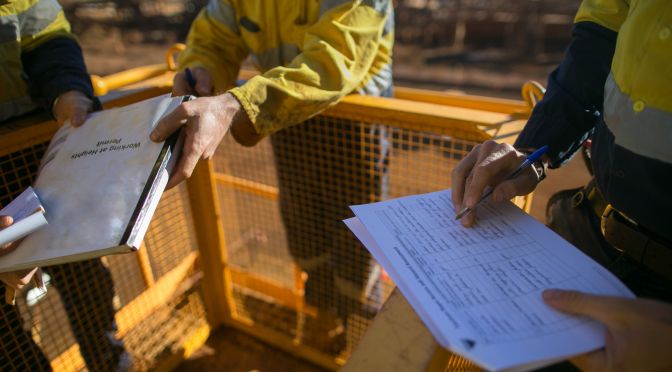Trust Your EHS Data, but Talk to Your Workers Also
There used to be a time when companies did not have the same quantity and quality of EHS data that they have now. That certainly was a problem. But do we have another type of problem now?
Today, organizations have gotten better at collecting data on incidents, near misses, risks, hazards, observations, and environmental metrics. This has been greatly facilitated by EHS software.
Moreover, the technology exists today to analyze EHS data and make sense of it. With a massive volume of data available, organizations can use advanced analytics to gain better insights, including descriptive analytics (“What’s happening?”), diagnostic analytics (“why it’s happening?”), predictive analytics (“What could happen?”), and prescriptive analytics (“What should be done?”).
Here’s a question that you don’t hear often: Is there a danger of relying too much on data?
Not everything that counts can be counted
Almost 60 years ago, in 1963, sociologist William Bruce Cameron wrote ‘Informal Sociology: A Casual Introduction to Sociological Thinking’, which included the following passage (emphasis added separately):
“It would be nice if all of the data which sociologists require could be enumerated because then we could run them through IBM machines and draw charts as the economists do. However, not everything that can be counted counts, and not everything that counts can be counted.”
At first glance you may think that the passage is irrelevant because sociology and EHS are completely different. But are they? Aren’t humans at the center or both? Ultimately, EHS is about keeping workers safe and health.
Listen to your EHS data
Let’s be clear: The great progress in technology and data management is a positive development. Advanced analytics present many opportunities for EHS professionals to improve safety performance.
You should trust what your EHS data says. You can gain a competitive edge and better protect your workers if you fully embrace EHS data analysis and new technologies.
Listen to your EHS data to generate these types of insights that will inform your decision-making:
- The top hazards that are leading to the most incidents. This informs your risk assessments and shows you where controls should be implemented.
- The locations, job types, or work groups with the most accidents and near misses. This helps you determine where you should focus your efforts and attention.
- Changes in incident rates following an increase in observations of at-risk or unsafe conditions or behaviors. This allows you to see if you’re successfully identifying or addressing problems.
In sum, it’s good to be data-driven. Numbers don’t lie. Decisions supported by data are more likely to stand scrutiny and to achieve their desired outcomes.
But talk to your workers also
However, there is a danger of relying too much on data.
Why? Because data is rational, precise, structured, and logical. Humans can also exhibit these traits, but they also carry inherent cognitive biases, irrationalities, and emotional complexities.
There are things that EHS data will tell you that you will not learn from conversations with people. But there are also things that conversations will reveal that you can’t learn from data.
For example, go talk to the professional with more than 40 years of experience who is about to retire, and who has a wealth of knowledge. He may give valuable information on how people feel, think, act, and behave, which is something that data may only partially tell you.
Talk to the employee who was recently hired, and graduated from university only last year. She may give great insights about the expectations of your future employees and the new workplace trends that may be common in one, five, or ten years.
Don’t dismiss what people have to say by relying too much on data.
Complementing, not competing
Ultimately, it’s about complementing data insights with what people say. Both are not mutually exclusive. Rather, they strengthen each other.
Data will tell you what happened, where it happened, and when. Through advanced analytics and artificial intelligence, data may even tell you why something happened, and what could happen.
But conversations with workers offer glimpses into the thought processes, emotions, and feelings that people go through, and which may provide critical insights into such questions as:
- Why are workers reluctant to wear PPE?
- Why is training material not being remembered?
- Why do workers hesitate to report near misses or observations?
- Why do they see processes and paperwork as unnecessary burdens?
In conclusion, always aim to improve your EHS data management through software and technology. But keep talking to your workers and don’t forget the human aspect of safety.











